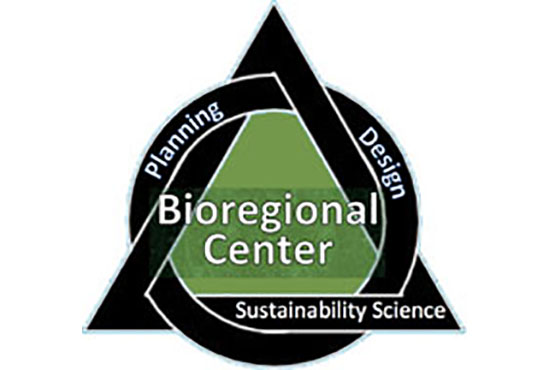UC AlianzaMX
The BioREG Center will be co-creating a Tri-National Bioregional Framework for Climate Adaptation and Resilience. We are bringing together researchers and community organizations from Baja Mexico, local Native Nations, and San Diego. We will spend a year determining what aspects of climate change we can work on collaboratively across urban-rural divides.
What is Wellspring?
Wellspring will focus on co-creating a Tribal Nations-Mexico-San Diego Bioregional Plan that helps communities most vulnerable to climate emergency reinhabit their lands, restore the urban-rural linkage, and connect place-based knowledge to action. This plan will not have all the right answers. Rather, it will be a living document that will evolve with the collective work of the community members. As a collective, we will analyze what structures currently work or do not work amongst the US, Mexico, and Tribal Nations. With the knowledge shared through a strategic participatory planning process, we will build a solution-orientated, consensus-based plan.
“Sustain the ones that sustain you and the earth will last forever” (Braiding Sweetgrass, Kimerer)
The way that we currently govern society does not align with the Earth. We must align ourselves with the earth to write policies through hybrid governance that is equitable, safe, and continual to improvement over time. Everyone is equally vulnerable to the consequences of climate change, thus it is of great importance to take interest in addressing agriculture, surveillance, ???. Alianza will focus on co-creating a Cali-Baja Bioregional Plan that helps communities most vulnerable to climate emergency reinhabit their lands, restore the urban-rural linkage, and connect place-based knowledge to action. This plan will not have all the right answers. Rather, it will be a living document that will evolve with the collective work of the community members. As a collective, we will analyze what structures currently work or do not work amongst the US, Mexico, and Tribal Nations. With the knowledge shared through a strategic participatory planning process, we will build a solution-orientated, consensus-based plan.
4 Subsections of Wellspring: Planning, Adaptation, Resilience, Regeneration
- Planning: Climate action Planning (CAP)
- Adaptation: Climate Change Adaptation (CCA)
- Resilient: Climate Resilient Development Pathways (CRDP)
- Regenerative: Climate-Stabilizing Regenerative Development (CRSD)
Our Role in Climate Action Planning
Typically, plans developed by universities often aim to reduce their carbon footprint, promote sustainability on campus, and integrate climate-related education and research into their programs. However, these initiatives often remain in the academic bubble instead of being shared in the place it inhabits. Our goal is to leverage our resources to bring people together towards a shared governance of our bioregion. Improving ecological regionalization provides an informed approach to climate planning that brings about a common framework for dialogue and action, promoting collaboration and knowledge-sharing among jurisdictions. Creating tri national strategies can be way more effective in targeting urgent management in specific regions, can more effectively allocate resource potential, can better support natural ecosystems, and can better support for the long term development of regions rather than short-term political boundaries.
Where We Are Reinhabiting
The BioREG Plan area of focus is the San Diego-Tijuana-Tribal Nations (SD-TJ-TBN) Transborder Bioregion
The San Diego-Tijuana-Tribal Nations (SD-TJ-TBN) Transborder Bioregion is home to more than 7 million people. This particular territory includes land and water bodies in both the US and Mexico that have sustained numerous tribes with indigenous lifeways for over 10,000 years (Connolly Miskwish, 2006, 2007, 2016; Wilken-Robertson, 2017; Hibbard, 2021; Akins & Bauer, 2021). The BioREG Plan’s study area thus broadly includes the self-governing tribal communities, on their terms, as well as several cities on both sides of the US-Mexico border.
San Diego-Tijuana-Tribal Nations (Left), The Three EcoRegions within the SD-TJ-TBN Region (Right)
Michael Connolly Miskwish, a member of the Campo Kumeyaay Nation, has offered valuable input that helps define the biogeographic and historical cultural coverage of the territory. Connolly helped establish and then directed one of the first Tribal Environmental Protection Agencies in the U.S. He teaches, consults and writes about traditional environmental practices in contemporary land and resource management (Source: Sunbelt Publications). The guidance that we receive from Michael Connolly Miskwish in defining this plan can be understood in Map 1 above. The coordinates correspond with the historic territory used by the Kumeyaay Indians for 10,000 years.
Other key contributors to this mapping effort include UC San Diego’s Center for US-Mexican Studies; Qualcomm Institute; San Diego Supercomputer Center; Scripps Institution of Oceanography (SIO); UC Global Food Initiative; Institute Municipal de Planeacion Urbana (Municipal Planning Institute, Tijuana, Mexico), and the US-Mexico Border Initiative.
